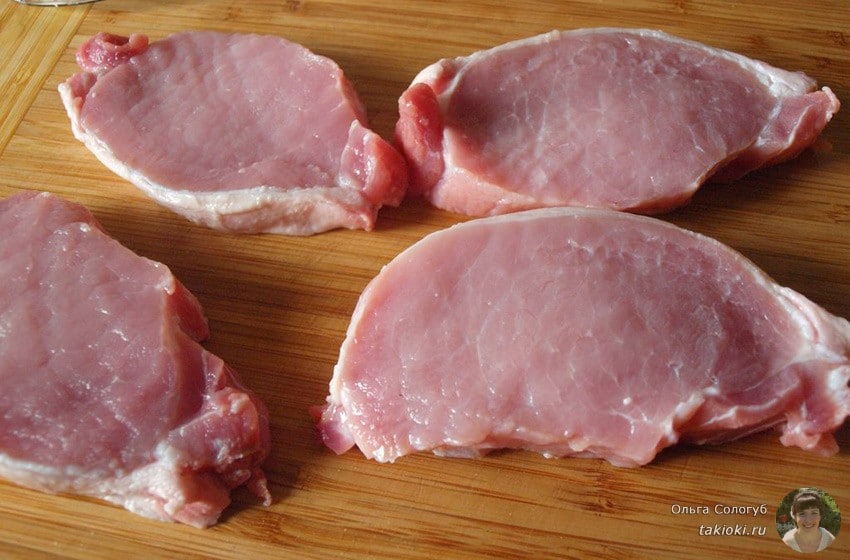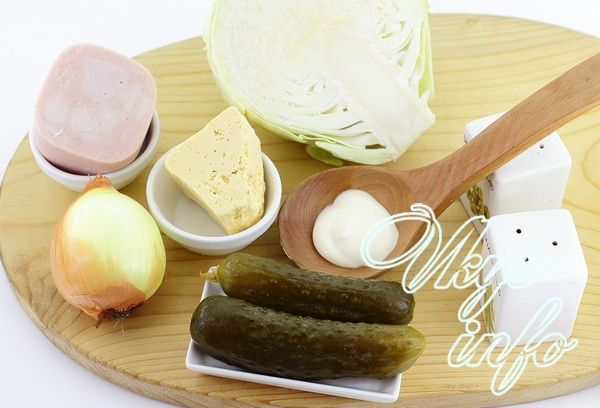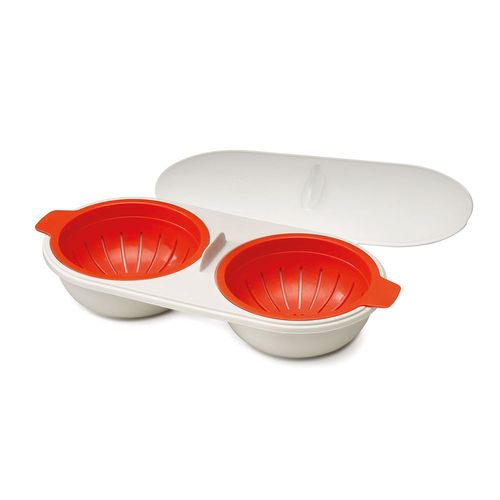Is river fish good for the body? The most useful fish for humans or which fish is healthier
It is no coincidence that the World Health Organization recommends eating fish 2-3 times a week. According to doctors, two fish days a week reduce the risk of oncology, keep your heart healthy, protect your blood vessels from atherosclerosis and even ... get rid of wrinkles.
Fish is a unique and indispensable product for health, ”says Svetlana DERBENEVA, Ph.D., senior researcher at the Cardiovascular Pathology Department of the Clinical Nutrition Clinic of the Institute of Nutrition RAMS. - Clinical studies conducted in our clinic showed that eating fish 2 times a week reduces the risk of heart disease by 30%.
The main value of marine and river inhabitants is the high content of polyunsaturated fatty Omega-3 acids, which regulate the level of lipid and cholesterol in the blood, thereby inhibiting the development of atherosclerosis and beneficially affecting the state of the brain, heart and blood vessels. Unlike meat, which is digested for at least 4 hours (which is considered to be heavy food), fish contains 15% of high-grade easily digestible protein, as well as "deficient" and essential minerals for metabolism - iodine, manganese, copper, zinc, fluorine.
Many mistakenly believe that the most useful fish is live or chilled.
“Fish is one of the few products that do not lose their beneficial properties even during long-term storage (provided that it was stored correctly, without intermediate defrosting),” says Svetlana Derbeneva. - But river fish (according to the sanitary-epidemiological services) is often affected by helminths. And if it has not undergone proper heat treatment, for example, was salted with a small amount of salt, then the probability of infection is quite high. And it’s completely wrong to assume that the most useful is fish of expensive varieties.
Low-cost fish species are actively used in medical nutrition - cod (it contains a lot of methionine that can prevent the development of fatty liver and improve fat metabolism in the body), saffron cod, hake, pollock, pike, carp, flounder, which contain no more than 3-4% fat and help to quickly lose weight without compromising health, ”says Svetlana Derbeneva. - But from eating fish of expensive varieties - stellate sturgeon, sturgeon, eel, salmon, halibut, etc. (fat content of more than 8%) - doctors recommend that patients who are overweight and atherosclerosis abstain. Spoil fish can only be improperly prepared.
The most useful fish is boiled or stewed (boiled in a small amount of liquid), ”says Boris SUKHANOV, professor at the 1st Moscow State University. Sechenov and Research Institute of Nutrition RAMS. - There are no complaints about baked fish, but it is undesirable to use foil (in this case, all the fat will remain in the dish). Better use a skillet with thick edges. Well-cooked fish cooked over an open fire. Not the best way - salting fish. Although all useful substances are preserved, excess salt makes such a dish unacceptable in the diet of patients with hypertension, coronary heart disease, kidney disease, etc. The only way that turns fish into a potentially harmful product is smoking. Carcinogenic substances that cause cancer are present in smoked fish. The most dangerous fish is hot smoked.
How to identify low-quality fish?
Chilled
1. The main indicator of the quality of fish is the eyes (should be red, not cloudy) and the gills (dark red in color, without mucus). Foul fish have gills of gray or brown color.
2. If the flesh on the slice is loose, similar to a sponge, it releases water when pressed, then this fish is not chilled, but thawed.
3. The mucus covering the skin is clear and odorless.
4. Press your finger on the scales. If there is a dent, the fish is rotten.
5. The final analysis can be done at home. Throw fish in a bucket of water. Fresh will go to the bottom, rotten - will emerge.
Frozen
1. The belly is yellow - an indicator of oxidation of fish oil. Eating such a fish will be impossible.
2. Uneven growths of ice - an indicator of repeated freezing. By the way, the law “On the Protection of Consumer Rights” states that fish are weighed after being completely released from the ice crust.
Fish fillet, meatballs, semi-finished products
Neither the consumer nor the expert can visually distinguish a natural product from a surrogate. Product quality can only be determined in the laboratory.
Which fish is the most healthy?
1. Marine - it is in marine fish that the highest content of polyunsaturated fatty acids, vitamins A and D, as well as fluorine and iodine.
2. Fatty varieties (mackerel, herring, tuna, halibut, trout, salmon family). Despite the fact that the calorific value of such fish is significantly higher, it contains the maximum amount of fish oil. And the fattest fish lives in the cold seas - there it uses plastic non-crystalline unsaturated fatty acids to form fat.
3. Small size - the fish body absorbs (absorbs) toxic substances from the water. Therefore, doctors recommend eating small fish that did not manage to accumulate a large amount of harmful substances. Proper preparation will help to partially rid the fish of impurities of harmful substances - for this you need to remove the skin and cleanse the fish of fat as much as possible. And the safest varieties of fish recognized anchovies, mackerel and sardines.
BTW
Leading Hollywood dermatologist and cosmetologist Nicholas Perricon has developed a special anti-wrinkle diet that allows you to tighten your skin without surgery, the effectiveness of which has been confirmed by many famous actresses. The basic principle of the lifting diet: daily use of fish of fatty varieties - tuna, salmon, mackerel, sardines, trout. Omega-3 fatty acids smooth wrinkles and moisturize the skin, and B vitamins improve blood circulation to the skin.
Fish is a favorite product of many people. In addition, it is very useful, so it should be consumed as often as possible. The product is rich in a variety of vitamins and minerals necessary for normal human development. What is useful fish, described in the article.
Beneficial features
What is fish good for? It is considered an easily digestible product that does not create heaviness in the stomach. He will feel good and light. For older people and children, this food will be indispensable, since it is absorbed in 2-3 hours. If you compare with other products, then, for example, for the assimilation of meat takes about 6 hours.
The energy value of fish is higher than meat. Some of its representatives are 20% composed of protein, a protein containing 17 amino acids needed for the body. What else is fish good for? It is enriched with fish oils. For example, it includes omega-3s, which have many positive properties: improving the condition of arteries, protecting against the appearance of blood clots, which can cause a heart attack or stroke.
In addition, how is fish good for humans? The product is needed for people who have high blood pressure. The omega-3 component is essential for normal brain and eye function. With it, inflammation in the human body is prevented, cholesterol in the blood is reduced.
What is contained?

In addition to vitamins, the product is enriched with valuable minerals. These include calcium, magnesium, which are required for a healthy look of hair, nails. Phosphorus is required to participate in energy metabolism. Of the minerals there are fluorine, copper, zinc and potassium.
The huge benefit of saltwater fish is the high iodine content that is required for the normal functioning of the thyroid gland. This component is also found in caviar; therefore, it is used in dietary nutrition and for anemia.
The most useful fish is marine. The river product contains less valuable omega-3 fatty acids. But it includes the necessary easily digestible protein that every person needs. Therefore, river inhabitants are recommended for diets, as they are suitable even for those who struggle with overweight.
Choosing a quality product
The taste and benefits are determined by the variety and habitat of the fish, the spawning period and storage conditions. It is advisable to buy it in specialized stores where sellers advise on a certain type of sea or river inhabitant.

It is dangerous to purchase products on the market, as the quality control there is lower, and the decency of sellers is different. Multiple freezing is considered to be the main cause of damage to such goods. It is advisable to choose live or chilled fish, but ice cream "in the glaze" is suitable when the product is covered with a light crust of ice.
The following rules will help you choose quality and fresh products:
- You need to pay attention to the gills: in fresh produce they are scarlet or burgundy, but not gray or black.
- Fresh sea and river inhabitants do not have a cloudy appearance.
- The pulp should be elastic and dense, without blue and purple spots. When pressed, it is important that she returns to her form. The meat of the red variety of the marine inhabitant should not be with a yellowish tint, and the white species should not be grayish. These signs indicate multiple frosts.
It is believed that the most useful fish is expensive, but this is not so. Inhabitants who feed on zooplankton are more easily absorbed by the body than rare and valuable predators. What is the most useful fish for humans, is described in the article.
Useful views
Which fish is good for humans? There is no definite answer to this question, since many inhabitants are of value to human health. Of the salmon, trout and salmon are considered the most useful. They slow down the aging process of the body, serve as a prophylaxis of diseases of the heart and blood vessels. If you take into account cod, it is preferable to choose cod, pollock, hake, haddock. These are diet foods that are especially beneficial for pregnant women.

What other sea fish is good? She also carries herring and sardine. These foods are considered nutritious (33% fat). A pike is dietary, since it contains 3% fat. Carps and crucians, which strengthen the musculoskeletal system and have a positive effect on the health of the skin and mucous membrane, are considered useful from carp.
Therefore, it is impossible to say unequivocally what is the most useful fish for humans. You should choose it as you wish. The safest cooking method is stewing on the grill, as well as baking and stewing. You need to use the product 2-3 times a week, alternating its river and marine species.
Harm
It should be borne in mind that sea and river inhabitants have a negative impact. Only those organisms that have grown in natural water bodies that are not contaminated with industrial waste are useful. Fish can live in harmful water, it absorbs all the poisons. The harm is as follows:
- Salts of heavy metals were often found in tuna and salmon meat. It includes lead, cadmium, arsenic, strontium. These components are dangerous to humans.
- An adult contains many poisons. On the packaging in stores usually do not indicate the age of the seafood.
- It is rare in which fish farms the products are really high-quality. The mass is increased by biochemical additives. Sick individuals are also used for sale.
What consequences await a person when eating sick fish? The negative sides are as follows:
- Heavy metal salts adversely affect the kidneys, adrenal glands, and ovaries.
- If individuals are highly infected, they can affect the development of oncology and infertility in men.
- Due to old fish, the composition of the blood deteriorates, metabolism and the hormonal system are disturbed.
- The consequences include stomach irritation, dysbiosis, diarrhea.

In frozen form, it is almost impossible to recognize that the fish is sick. But be sure to look at the expiration date. You also need to pay attention to the belly: it should be light. Do not take products with yellowness. It is advisable to purchase a peeled fish. Many harmful components are found in the intestines. And during storage, poisons enter the meat.
Total
Thus, fish is only useful if it is fresh and caught in clear water. Then it is suitable for consumption. A spoiled product will not bring any benefits.
Proper nutrition is the key to good health for many years. It is difficult to imagine a competently composed weekly menu without fish. The benefits of fish were noted many centuries ago, so the tradition came to us - one day a week must eat fish (the famous "fish day").
Useful properties of fish
Fish fillet is a source of easily digestible protein, trace elements, vitamins, but the most valuable thing in fish is fat, which consists of polyunsaturated fatty acids (omega 3 and omega 6) and is completely absorbed by the body.
Speaking about the benefits of fish, it is worth focusing on which fish is healthier: river or sea. In river fish or fish from freshwater reservoirs, the content of protein and fat is lower, it does not contain iodine and bromine, which are always in the composition of sea and ocean fish.
The benefits of fish harvested from the deep sea are undoubtedly greater than the benefits of fish caught from the nearest river.
Sea fish, in addition to being rich in iodine and bromine, saturates our body with phosphorus, potassium, magnesium, sodium, sulfur, fluorine, copper, iron, zinc, manganese, cobalt, and molybdenum. The vitamin range contained in the fillet of sea fish is significant, these are B vitamins (B 1, B 2, B 6, B 12), vitamin PP, H, in small quantities vitamin C, as well as fat-soluble vitamins A and D.
The benefits of fish are as follows:
Saturation of the body with high-quality protein;
Normalization of blood coagulation function;
Lowering blood cholesterol;
Normalization of thyroid function and prevention of its diseases;
Vision improvement;
Normalization of the nervous system, improving memory, sleep, reducing irritability;
Increased life expectancy;
Improving the condition of the skin, hair, nails, bones and teeth;
Normalization of metabolism;
Helps prevent cardiovascular disease and strengthens the cardiovascular system
Fish does not lead to weight gain, even oily fish, due to its unsaturated fatty acids, do not contribute to weight gain and can be used to lose weight, so nutritionists often advise to use boiled or baked fish to lose weight.
Herring Benefits
In the most famous and beloved by all herring, however, just like in any other fish, all the main useful qualities of fish meat are concentrated. However, herring has another indisputable advantage - it is inexpensive.
Herring meat contains a large number of iodine compounds, and fish oil contains almost a third of its mass. There is a pattern - the north the herring is caught, the fatter it is.
In addition, this fish is useful in containing a large number of trace elements. If you take up their enumeration, you will have to name the lion's share of those that make up the periodic table. The calorie content of 100 grams of herring is 250 kcal. About the taste is not even necessary to say. Herring is salted, marinated, fried - absolutely all culinary methods are suitable.
Dried and stockfish
The benefits of eating dried fish have long been proven by scientists around the world. The main merit of the fish’s benefits lies in the content of omega-3 polyunsaturated acids in its composition.
Destruction of cancer cells. The omega-3 fatty acids found in dried and dried fish have an important role to play in reducing the risk of the formation of cancers, in particular, the lungs, breast, prostate and colon. There are only three types of omega-3 acids, two of which contain seafood. Studies have shown that eating such fish in your diet can help reduce the risk or slow down the development of cancer cells.
Prevents depression in pregnant women. By using dried or dried fish during pregnancy and after delivery, you can protect your already precarious state from overload from depression. A deficiency in fatty acids can minimize the level of serotonin, which is contained in the brain tissues, which leads to depression.
Prevention of senile dementia. French scientists have been able to conclude that eating dried fish will also help in the fight against Alzheimer's and senile dementia. Elderly people who eat dried fish or other dried seafood twice a week will reduce the risk of Alzheimer's disease and senile dementia by 35%.
Prevents a heart attack. Studies conducted by American scientists argue that eating dried fish twice a week will reduce the risk of death from a heart attack by 45%. Studies have been conducted among patients whose average age is 72 years.
Reduce the risk of premature birth. Having examined about 9,000 pregnant women, scientists from Denmark concluded: when a pregnant woman’s diet lacks dried, dried fish, this will significantly increase the risk of premature delivery and the birth of a small baby. The culprit of this is the lack of omega-3 fatty acids that such fish or fish oil contains.
Protects against heart disease. Scientists from the UK were able to find out that omega-3 fats are able to counteract the accumulation of fat deposits in blood vessels. Such fatty layers can block the movement of blood on the way to the heart and brain.
Anti-wrinkle. If the fish regularly contains fatty varieties of fish, this will also significantly help in the fight against skin aging. The aging process becomes much faster in the event of a deficiency of protein in the body, and the omega-3 fatty acids that are present in fish can make up for this deficiency.
Effect on the sleep of the child. A child who was born to a woman who consumes dried and dried fish rich in fatty acids in sufficient quantities will sleep much stronger and calmer than others in the first days of life. Omega-3 fats are actively involved in the development of the baby’s brain. As a conclusion, it is very important for any pregnant woman to receive these much-needed acids with food in the required amount.
The benefits of perch
Perch is sea and river. The meat of the perch is tender and there is not much of it, there are few bones in the fish. Good in any form, but best in fried or boiled. Dietary fish. When freezing, all useful qualities are preserved.
Good for skin and mucous membranes.
Regulates blood sugar.
Antioxidant.
Contains phosphorus in large quantities.
Good for the digestive system.
Beneficial effect on the nervous system.
Sudak and its benefits
The meat of this fish has a good effect on metabolic protein-carbohydrate processes, reducing the total cholesterol and thereby reducing the risk of clogging of blood vessels.
A large number of vitamins of the PP group allows you to normalize the functioning of the nervous system and brain function, increase visual acuity and rejuvenate the skin.
The biochemical composition of pikeperch meat helps the digestive and cardiovascular system, regulates the adrenal glands and the thyroid gland. It is rich in iodine, which is necessary for the mental development and normal growth of the child, as well as for the normal formation and development of the sex glands in adolescence.
For the growth and healthy state of bone tissue, the normal functioning of joints, zander is useful as a source of fluorine and phosphorus.
Potassium helps the heart muscle function normally, removes excess fluid from the body, thereby preventing swelling.
It is useful for the musculoskeletal system, for the healthy state of nails and hair contained in pike perch sulfur.
Vitamins A, C, B, E, amino acids, manganese, nickel, iron, zinc, copper, magnesium, calcium prevent the development of allergies, diabetes, heart and blood vessel diseases, contribute to the rapid restoration of bones in injuries and prevent caries.
It's hard to believe, but that's it - in the meat of one fish!
Useful properties of crucian carp
100 grams of crucian meat contains 9.1 g of protein, 1.25 g of fat, 0.05 g of carbohydrates. It is very rich in vitamins B 12 and D, as well as minerals. 50 g of meat contains 51 calories.
Fish meat is rich in polyunsaturated fatty acids, known as omega-3s, which are essential for our body. Freshwater crucian carp reaches the level of ocean fish in their number. Crucian meat from the pond is easily digested than fish from the ocean and contains half the calories (50 g of meat is only 51 kcal), which is especially valuable for people who are overweight.
Omega-3 fatty acids have important anti-inflammatory and antithrombotic properties and prevent the occurrence of arrhythmias and atherosclerosis. They also play an important role in many cellular processes that are associated with lipid metabolism. Substances contained in crucian meat play an important role in the neuropsychic system and have a beneficial effect on psychomotor development. They help prevent diseases of the cardiovascular system, identify abnormalities of the immune system, Crohn's disease, breast cancer and prostate cancer. Crucian meat activates blood circulation.
The benefits of pike
Useful properties of pike can be seen with the naked eye, you just need to see the chemical composition of fish, which is replete with a high content of substances necessary for the human body. Vitamins of group A, B, folic acid, choline, as well as magnesium, phosphorus, sodium, selenium and manganese, these elements are the main benefits of pike. Nutritionists have long turned their eyes towards pike meat, which is often used in low-calorie or protein diets.
The main useful property of pike for all adherents of a healthy diet is that the composition of the fish includes a very tiny amount of fat (1%). The use of pike for a balanced diet is also that the fish contains a large amount of natural protein, which is perfectly absorbed by the body and saturates it with useful micro and macro elements.
The benefits of fish in a person’s life are good health, strong immunity, and good and carefree sleep. Do not buy expensive medications to extend your life and be healed, eat right enough. Fish will help you with this, its diet is diverse. From a large number of dishes, you will certainly find something for yourself.
Fish is a nutritious but often dietary product. But which types of fish are the most healthy? The benefits of seven species of fish will be covered in this article.
Fish is without a doubt a very healthy product. What is the most healthy fish? What kind of preference? Doctors strongly recommend adding fish dishes to the menu at least twice a week. It contains easily digestible protein, such food does not create a feeling of heaviness. It has a lot of vitamins A and D, as well as fatty acids that prevent diseases of the cardiovascular system.
Which fish is healthier: top 7 species
We have prepared a rating of the seven most beneficial types of fish for the body, the inclusion of which in the diet will improve mood, raise tone, and improve skin and hair condition. Besides, regular use of fish in the absence of contraindications - This is an excellent prevention of many health problems.
1. Tuna
On the Internet you can find many lists of healthy fish. And in each of them there is tuna. It is a leader in vitamins and nutrients. At the same time, its caloric content does not exceed 80 kcal per 100 g. Tuna fish is pure protein. It has very little fat and there is zinc, phosphorus, calcium, selenium and vitamin D. You can try in Sicily.
There are several general rules for choosing wholesome fish:
- It should be marine. It is sea fish that collects all the substances the body needs in itself, and salt water is a natural disinfector.
- Fish should be oily. This has a higher concentration of vitamin D and essential fatty acids.
- The fish should be small or young. It is believed that fish are able to absorb toxins from the water and therefore, the less the fish stayed in the water, the less toxins accumulated in it.
2. Salmon: trout, pink salmon and salmon itself

Trout is one of the favorite fish species.
The use of oily red fish improves the cardiovascular system, prevents the formation of blood clots. It has many vitamins of groups B, A and D, as well as selenium, phosphorus and folic acid. Trout is slightly less caloric, while it also contains sodium, potassium, calcium, manganese, magnesium, fluorine. And, of course, omega-3 and omega-6 fatty acids, indispensable for the work of the heart and the body as a whole. In addition to the basic properties, they help the endocrine system, contribute to the proper formation of bones and metabolism.
3. Cod

Cod ready to cook steaks!
The most beneficial part of this fish is the liver. There is almost no cholesterol in cod. Her white meat contains 19% protein and only 0.3% fat. Regular consumption of cod strengthens the immune system, improves the functioning of the nervous system and metabolism.
6. Carp, crucian carp, carp

Future Christmas Carp (Popular)
These are relatively oily fish species. They contain up to 11% fat and up to 17% protein, and therefore the benefits of this fish for the body can hardly be overestimated. In addition, they have a lot of calcium and sulfur. They are useful for the beauty of the skin and nerve tissue.
7. Catfish

Do not be afraid! This is catfish 🙂 Or just CatFish.
Catfish - although not marine, but useful. Its tender sweetish meat contains all the necessary fats and proteins. Amino acids contained in catfish are beneficial for the mucous membranes, nervous and digestive systems.
But the point is not even which fish is healthier. The main rule is that it should always be fresh. Even river, large and relatively dry, but fresh fish will be much healthier than not very fresh tuna.
Most of you, I think, have heard that saltwater fish are healthier than river fish. Today I decided to figure out whether this is true and why this is so. Having studied various information about fish in more detail, having read a sufficient number of articles and expert opinions, I came to the conclusions that I want to share with you ...
What is sea fish useful for?
And so, why does our body even need saltwater fish?
Firstly, marine fish is one of the most healthy foods. It contains a huge amount vitamins (A, C, D, E, vitamins gr. B) and minerals (potassium, phosphorus, sodium, magnesium, calcium, iodine, zinc, iron, fluorine).
Secondly, marine fish contain essential and essential polyunsaturated fatty acids for the body - OMEGA 3 (alpha linolenic acid) and OMEGA 6 (linoleic acid). By the way, these fatty acids are not synthesized by our body, and therefore we must definitely get them from the outside, i.e. with food. A lack of linoleic and alpha-linolenic acids can lead to various diseases, especially to diseases of the cardiovascular system: atherosclerosis, stroke, heart attack.
Thirdly, since OMEGA 3 is still more contained in marine fish, it is simply necessary for optimizing the ratio of OMEGA 3 and OMEGA6 . These two acids in our body should ideally be approximately the same amount. But the problem is that most products contain OMEGA 6, i.e. our body receives more of this particular fatty acid, which results in an imbalance in our body and a number of diseases of the same cardiovascular system, brain dysfunction, depression, etc. . And only with the help of regular consumption of seafood can we enrich our body OMEGA 3 and, as a result, achieve the optimal ratio of alpha-linolenic and linoleic acids.
I think many have a natural question: so how much fish do you need and which one to get the required amount of OMEGA 3? The daily requirement of the body for OMEGA 3 is 2.5 g. in a day. The greatest amount of alpha-linolenic acid is contained in 100 grams:
- mackerel - 1.5-2.8 gr.
- salmon - 1.3-2.2 gr.
- horse mackerel - 1.3-2 gr.
- Sardine 1.3-1.8 gr.
- herring - 1.3 -1.8 g.
- pink salmon 1.2-1.6 gr.
- halibut -1.2 -1.5 gr.
- tuna - 0.5-1.3 gr.
- capelin - 0.7-1.2 gr.
It follows from this that eating 100-200 gr. fish per day, we can replenish OMEGA 3 in our body. According to the recommendations of the World Health Organization, at least 2-3 portions of fish per week should be present in our diet.
About river fish ...
As you can see, the most useful is sea and ocean fish. River fish is inferior to marine fish in the content of almost all useful substances, in addition, it has very few polyunsaturated fatty acids. For example, OMEGA 3 per 100g. pike - 0.03-0.07g., catfish - 0.3 gr. bream - 0.1g.
Despite this, there are several facts in favor of river fish:
at first, a sufficient amount of protein in river fish with an optimal ratio of amino acids (tryptophan, lysine, methionine, taurine);
secondly, it is believed that calcium and phosphorus of river fish are better absorbed than similar minerals of saltwater fish;
third, river fish stimulates digestion is easier to digest by the body and therefore it is more dietary.
The most useful of river fish, most nutritionists consider zander, perch and carp.
It is also very important to choose a really high-quality, good fish and cook it properly. I will write about this in the near future. So, to be continued ... 😉



















